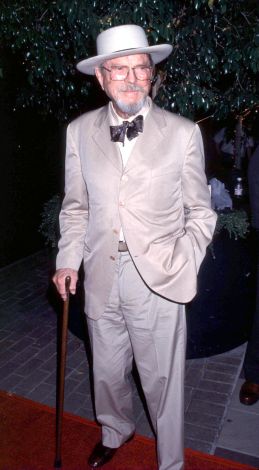A cel washer for Ub Iwerks at Celebrity Pictures, Chuck Jones joined the Warner Bros. animation unit in 1933, and after writing and animating numerous cartoons, became a director of the Merrie Melodies series in 1938 with The Night Watchman. Over the next two decades he established himself as perhaps America's greatest maker of cartoons -- a master at creating slapstick comedy who also had a special fondness for sudden moments of sophisticated repartee or subtle character expression.
Working regularly with writer Michael Maltese, Jones brought new heights to Warners' greatest characters, particularly Daffy Duck (The Scarlet Pumpernickel, Duck Dodgers In The 24-1/2 Century, Duck Amuck) and Bugs Bunny (Hair-Raising Hare, Rabbit Fire, What's Opera, Doc?); he also created such beloved figures as the Road Runner and the Coyote (Fast and Furry-ous), Pepe Le Pew (For Scent-Imental Reasons), and the Three Bears (A Bear for Punishment). Jones further distinguished himself with numerous outstanding one-shot cartoons, including The Dover Boys, Feed the Kitty, and his classic, the singing-frog morality tale One Froggy Evening. In the mid-1960s he made several Tom & Jerry cartoons at MGM. More impressive was his work in the animated feature The Phantom Tollbooth (1969), co-directed by Abe Levitow; and his television adaptations of Rudyard Kipling's (Rikki-Tikki-Tavi (1975)) and Dr. Seuss' (How The Grinch Stole Christmas (1965)). In 1979 Jones created linking animation scenes for a feature-length reissue anthology of his Warners cartoons, The Bugs Bunny/Road Runner Movie (aka The Great American Chase). Through the 1990s, he provided animated sequences for Gremlins 2: The New Batch (1990) and Mrs. Doubtfire (1993).



